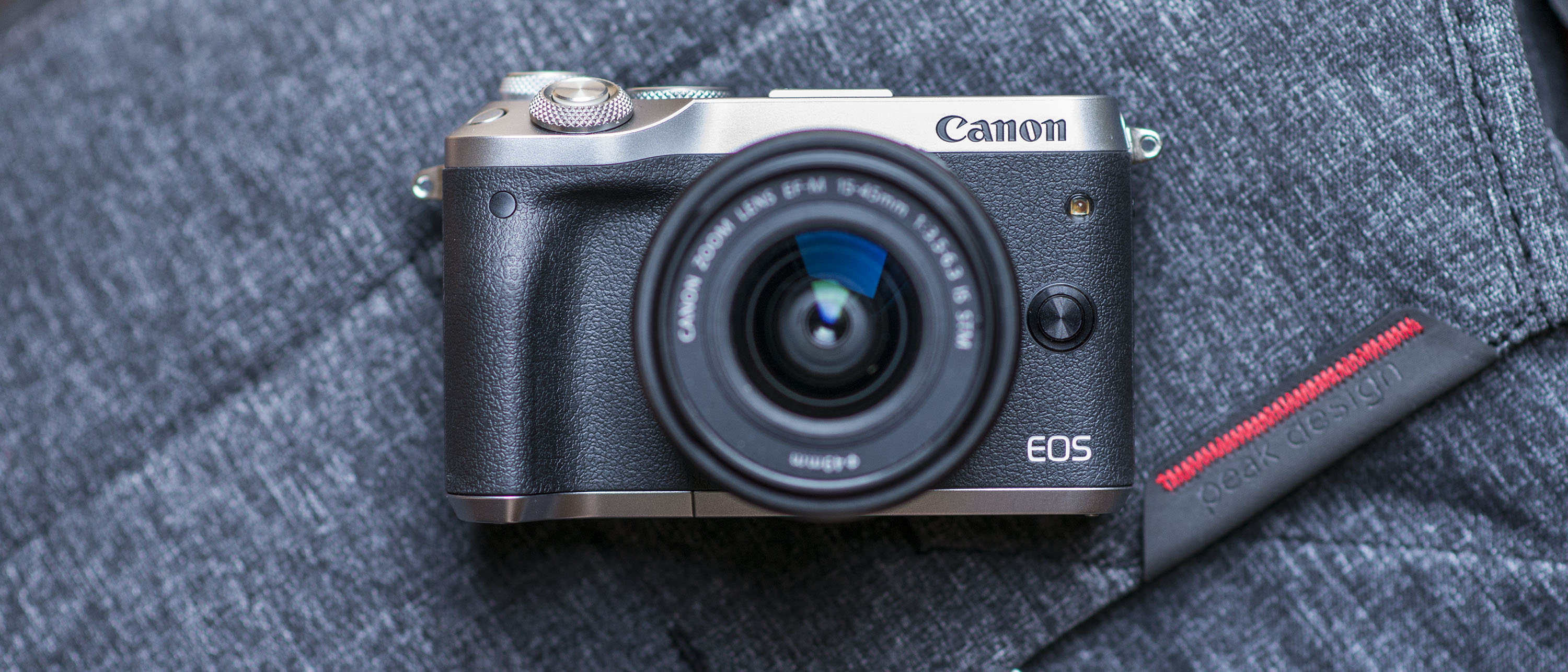Why you can trust TechRadar
Build and handling
- Five separate physical dials
- Integrated flash and hot shoe
- Weighs 390g
In terms of the Canon EOS M6's design, there have been no great departures from the EOS M3 – and that’s no bad thing. With a sculpted grip and a range of buttons that can be extensively customized, there’s a great deal to love.
There’s been some reshuffling of controls, although the only difference of any significance is the addition of a further dial on the top plate. This now means the top plate offers two command dials, together with mode and exposure compensation dials, which is in addition to a further control dial on the back of the camera.


This brings to total number of dials to five, which is excellent for those who prefer to access things manually rather than via menus and touchscreens – though you’ll no doubt opt for touchscreen operation at many points when you see how extensively this can be used to operate the camera.
Thanks to the design of the grip the M6 generally feels good in the hands, although those with larger hands may find it a little cramped, and prefer a model with a grip more akin to that found on a DSLR. The eyelet for the camera strap also interferes with holding the camera comfortably, but if you tend to keep your camera hanging from your neck you won't mind this.
Unlike some of its rivals, the M6 appears to use polycarbonate for its top and bottom plates
The Canon EOS M6 weighs just 520g with its memory card, battery and EF-M 15-45mm f/3.5-6.3 IS STM kit lens in place, and, thanks to the collapsible construction of the lens, it’s more compact than the average compact system camera at this level.
While the focal range of the kit lens in 35mm terms equates to 24-72mm – that wide–angle figure being very compared to some other kit lenses – the fact that the lens only offers a maximum aperture of f/6.3 at its telephoto end is somewhat disappointing.
Unlike some of its rivals, the M6 appears to use polycarbonate for its top and bottom plates, although the four dials on the top plate are made of metal, and the bulk of the body is finished with a smart rubber that feels as good as it looks. It’s a shame not to see more robust magnesium-alloy paneling, but attention to detail is still strong and no corners have been cut.
Autofocus
- 49-point AF system
- Dual Pixel CMOS AF
- Focus peaking with color and peaking level control
The camera’s sensor uses 49 areas to autofocus as standard, although you can also manually shift a point around all but the peripheries of the frame. You can also use the touchscreen to tap the subject on which you want the camera to focus, and employ the Smooth zone AF option to keep track of erratically moving subjects within a small portion of the frame.

Autofocus performance is generally sound. In good light the Canon EOS M6 is able to bring subjects to focus in good time; perhaps not quite as rapidly as some rivals, but certainly fast enough for static subjects. With its EF-M 15-45mm f/3.5-6.3 IS STM and EF-M 18-150mm f/3.5-6.3 IS STM lenses, it does this practically silently too.
Thanks to its Dual Pixel CMOS AF system, the M6 is generally very capable of keeping track of a moving subject when set to focus continuously, although as with any such system, the extent to which it manages this is heavily dependent on what you're trying to track. For example, a runner wearing clothing that contrasted well with their background proved to be no issue for the system, but it wasn't quite as reliable when focused on a dog among grass that was only occupying a small portion of the frame.
When using manual focus you can call upon focus peaking, with red, yellow and blue colours on offer, together with high and low peaking levels to choose from. The peaking outline isn’t quite as thick as on some other models, although this is arguably a good thing as it obscures less of the subject’s details, thus helping with accuracy.
Current page: Build, handling and AF
Prev Page Introduction and key features Next Page Performance and image quality